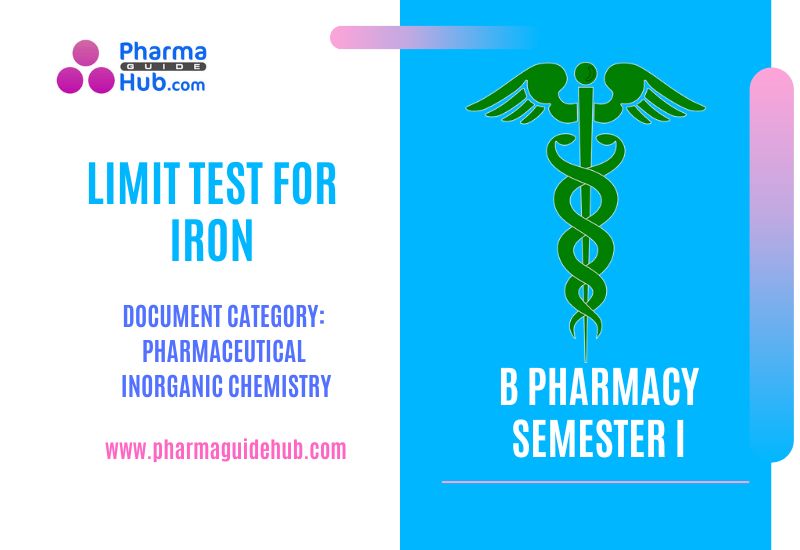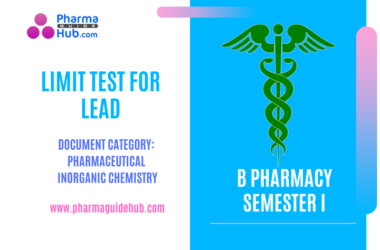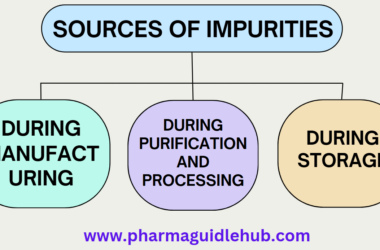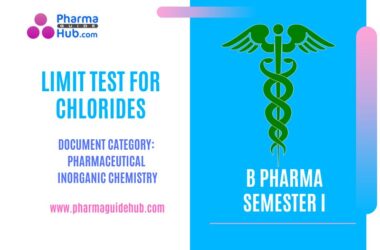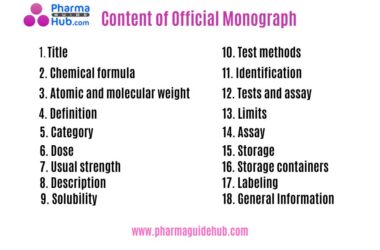Definition of limit test:
Limit test is defined as a quantitative or semi-quantitative test designed to identify and control small quantities of impurities which are likely to be present in the substance.
Apparatus Required
Nessler cylinders
Glass rod
Stand
Chemicals Required
STD Iron solution : Ferric ammonium sulphate (1.726 g) dissolved in 10 ml of 0.1 N H2SO4 and sufficient water to produce 1000 ml.
Sulphuric acid (0. 1 N) : 10.0 ml.
Iron-free citric acid solution (20% w/v) : 2.0 ml.
Thioglycollic acid : 0.1ml.
Iron-free ammonia solution : 20 ml.
Reaction

Principle
The test depends upon the reaction between ferrous iron and thioglycollic acid in the presence of ammonia. A pale pink to deep reddish purple colour is produced. Ferric iron is reduced to ferrous iron by the thioglycollic acid and the compound produced is ferrous thioglycollate. Citric acid forms a soluble complex with iron and prevents its precipitation by ammonia as ferrous hydroxide. Ferrous thioglycollate is colourless in neutral or acid solution. The colour develops only in the presence of alkali. It is stable in the absence of air but fades when exposed to air due to oxidation to the ferric compound. Therefore, the colours should be compared immediately after the time allowed for full development of colour is over.
Procedure
Take two 50 ml Nessler cylinders. Label one as “Test” and the other as ‘Standard’.
| Standard | Test |
| 1. Dilute 2 ml of standard iron solution with 20 ml of water in a Nessler cylinder. | 1. Dissolve the specified quantity of the substance in distilled water and transfer to Nessler cylinder. |
| 2. Add 2 ml of 20% w/v solution of iron – free citric acid and 0.1ml of thioglycollic acid and mix. | 2. Add 2 ml of 20% w/v solution of iron – free citric acid and 0.1 ml of thioglycollic acid and mix. |
| 3. Make alkaline with iron-free ammonia solution. | 3. Make alkaline with iron-free ammonia solution. |
| 4. Dilute to 50 ml with water. | 4. Dilute to 50 ml with water. |
| 5. Observe the intensity of the purple colour developed by viewing vertically and compare with that of the sample. | 5. Observe the intensity of the purple colour developed by viewing vertically and compare with that of the standard. |

The intensity of the colour in STD is seen less than that of the Test; thus, the sample fails the limit test of iron
Visitors are also reading:
Limit Tests for Pharmaceutical Substances

